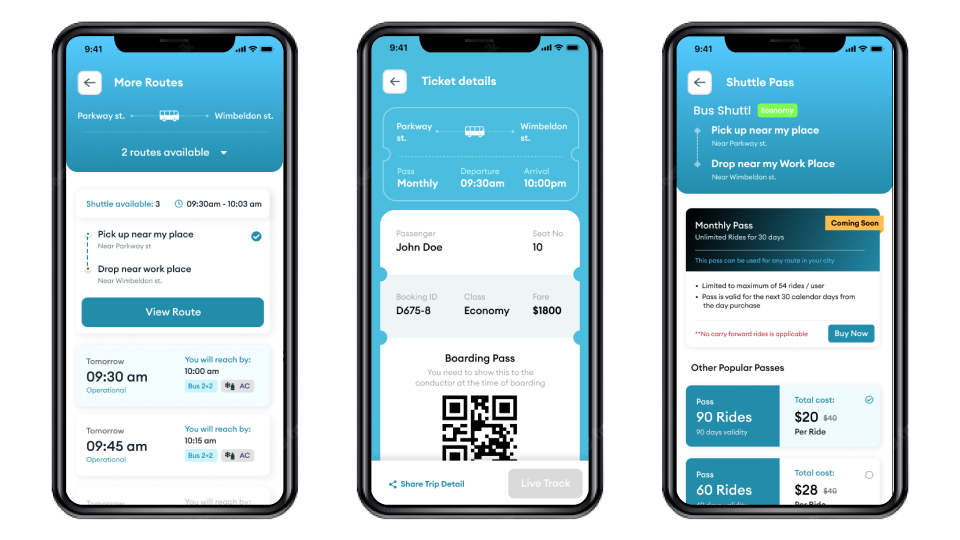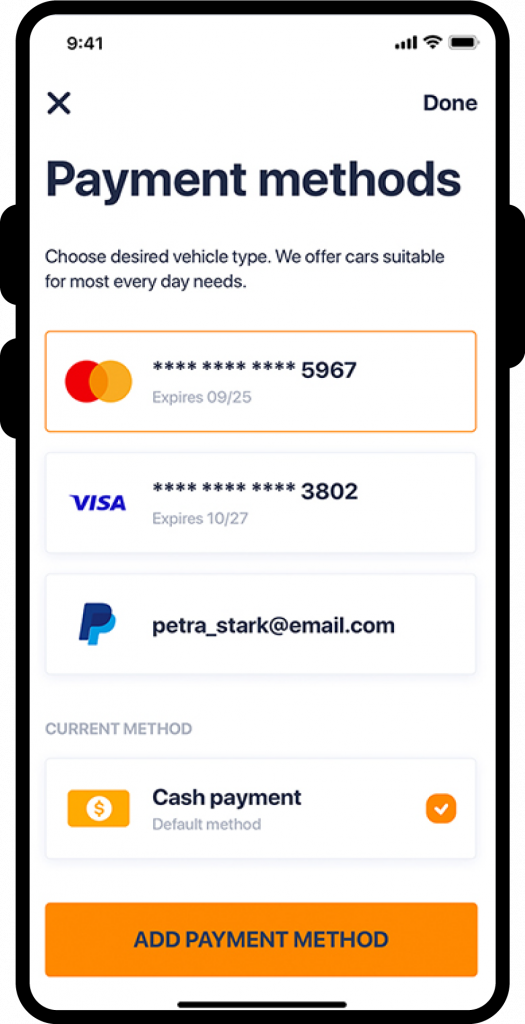
How to Reduce Manual Work with Shuttle Management Software?
In today’s fast-paced transportation industry, shuttle service providers often grapple with manual processes that hinder efficiency and scalability. Tasks such as scheduling, dispatching, route planning, and reporting are frequently managed through spreadsheets, phone calls, and paper logs. These manual methods are not only time-consuming but also prone to errors, leading to missed pickups, inefficient routes, and dissatisfied passengers. The Bureau of Labor Statistics reported that hand laborers and material movers, who often perform manual tasks in transportation and warehousing, had a median annual wage of $37,680 in May 2024, with a projected employment growth of 4% from 2023 to 2033. Implementing shuttle management software can address these challenges by automating key operations, reducing manual workload, and enhancing overall service quality. In the following sections, we’ll explore how such software can transform shuttle services, leading to increased efficiency and customer satisfaction.

What Is Shuttle Transport Management Software?
AI-based shuttle management software is a digital platform designed to streamline and automate the end-to-end operations of shuttle services—whether it’s for corporate employee transport, airport transfers, school buses, or event shuttles. At its core, this software helps operators manage routes, schedules, vehicles, drivers, and passengers through one centralized system.
Traditionally, managing a shuttle fleet involves juggling multiple tools—paper logs, Excel sheets, phone calls, and even WhatsApp chats for coordination. This scattered workflow often leads to missed trips, poor communication, and a lack of operational visibility. Shuttle management software replaces all of that with automation, real-time data, and smart alerts.
Most modern systems are cloud-based and come equipped with mobile apps for both drivers and passengers, making the entire ecosystem more connected and responsive. Operators can track vehicle locations in real-time, assign trips instantly, view route efficiency, and send automated updates to passengers—all from a single dashboard.

Common Use Cases
A. Corporate Transport: Managing pick-ups and drop-offs for employees across multiple shifts and routes.
B. Educational Institutions: Handling student transportation with safety alerts and live tracking for parents.
C. Airport Transfers & Tourism: Coordinating shared rides, optimizing schedules, and handling on-demand requests.
D. Event Shuttles: Organizing transportation logistics for conferences, concerts, and festivals.

Manual Processes Common in Shuttle Operations
Many shuttle businesses—especially small to mid-sized ones—still rely heavily on manual processes to manage their daily operations. While these methods might work in the early stages, they quickly become bottlenecks as the business scales. Here’s a breakdown of the most common manual tasks that weigh down shuttle operations:
1. Scheduling and Dispatching
Coordinating pickup and drop-off times for multiple routes, drivers, and vehicles is often handled through spreadsheets or whiteboards. Changes—like delays or route adjustments—require phone calls, SMS chains, or group chats, creating communication silos and room for error.
Pain Point
Missed connections, scheduling conflicts, and hours wasted on rescheduling.
2. Trip and Booking Management
Bookings are sometimes logged in notebooks or basic spreadsheets, with no centralized system to monitor availability in real time. Manual tracking of ride assignments often results in overbooking or inefficient use of vehicles.

Pain Point
Limited visibility into real-time capacity leads to underutilized or overcrowded shuttles.
3. Driver Coordination
Communicating with drivers through calls or messaging apps means there’s no formal log of instructions, route changes, or confirmations. Inconsistent coordination can lead to misrouted trips or confusion, especially during peak hours.
Pain Point
Driver frustration, higher operational stress, and service delays.
4. Billing and Payment Tracking
Without an integrated payment system, invoices and payments are often managed separately—sometimes manually issued, handwritten, or delayed. Tracking payment status becomes complex, especially for recurring customers.
Pain Point
Revenue leakage and delayed cash flow due to human error or poor record-keeping.
5. Reporting and Analytics
Manually compiling daily reports for fleet usage, fuel consumption, trip counts, or attendance can take hours. And even then, insights are limited and reactive rather than predictive.
Pain Point
Lack of data-driven decision-making; hard to identify trends or inefficiencies.
6. Passenger Communication
Sending ride reminders, ETA updates, or alerts manually is inconsistent. Passengers often rely on driver calls or front-desk coordination to get updates, which affects the overall rider experience.
Pain Point
Poor customer satisfaction due to communication gaps and service ambiguity.
The Bigger Picture
When multiplied across dozens of trips per day, these manual processes consume significant manpower, introduce costly mistakes, and stall growth. Businesses that continue to operate this way risk falling behind competitors who have already embraced digital automation.
The good news? Shuttle transport management software can automate and centralize all of these tasks—freeing up your team’s time and improving operational accuracy.

Key Features That Automate Manual Work
Modern shuttle management transport software is designed to take the repetitive, time-consuming, and error-prone tasks off your plate. Whether you’re running 3 shuttles or 300, automation helps streamline daily operations, reduce staffing needs, and boost service quality. Here are the core features that directly replace manual work:
1. Automated Scheduling & Route Optimization
Instead of using spreadsheets or whiteboards, the system automatically schedules trips based on demand, driver availability, and traffic conditions. It suggests the most efficient routes and adjusts them in real-time when needed.
Benefit
Saves hours in planning, reduces fuel costs, and ensures on-time arrivals.
2. Real-Time GPS Tracking
Every vehicle in your fleet can be tracked live on a digital map. You’ll know exactly where each shuttle is, how fast it’s moving, and whether it’s running behind.
Benefit
Improves fleet visibility, helps dispatchers manage delays proactively, and builds passenger trust.
3. Online Booking and Reservation System
Passengers or admins can book seats through a web portal or app—instantly updating availability. This eliminates manual data entry and phone bookings.
Benefit
Reduces booking errors, double entries, and administrative workload.
4. Mobile App for Drivers and Passengers
Drivers get trip details, route navigation, and updates directly on their app. Passengers receive ride reminders, estimated arrival times, and can even rate the service afterward.
Benefit
Improves communication, reduces dependency on calls and texts, and enhances user experience.
5. Auto Alerts and Notifications
The software can send automated messages to passengers and drivers—like ride reminders, pickup confirmations, ETA changes, or emergency alerts—without manual intervention.
Benefit
Keeps everyone informed in real-time, even when schedules shift.
6. Digital Attendance and Passenger Check-in
With QR codes or app-based check-ins, passengers can be marked present automatically when boarding the shuttle.
Benefit
Eliminates the need for manual headcounts or paper logs—ideal for schools and employee shuttles.
7. Integrated Payment and Billing
The system can process payments, generate invoices, send reminders, and reconcile accounts—without needing a separate billing tool.
Benefit
Reduces billing delays, automates revenue collection, and ensures financial accuracy.

8. Analytics and Performance Dashboards
Instead of manually compiling reports, managers get access to ready-made dashboards tracking key metrics—like vehicle usage, route performance, trip counts, and on-time rates.
Benefit
Enables data-driven decisions, identifies inefficiencies, and proves ROI.
With these features in place, shuttle management software doesn’t just reduce manual work—it helps you run a smarter, more scalable operation with fewer resources.
What to Look for in a Good Shuttle Management Transport Software
Not all shuttle management solutions are built the same. While many offer basic features like scheduling and tracking, only a few provide the flexibility, reliability, and scalability that growing businesses truly need. Whether you’re running a small fleet or managing hundreds of daily trips, here’s what to consider when choosing the right software:
1. Ease of Use (for Admins, Drivers & Riders)
A great system should have a clean, intuitive interface that anyone—from tech-savvy managers to on-the-go drivers—can use without extensive training. Mobile apps for drivers and riders should be equally user-friendly and bug-free.
What to look for:
a. Minimal learning curve
b. Simple UI/UX for quick onboarding
c. Mobile accessibility for all users
2. Scalability & Flexibility
Your shuttle operations today might look very different in 6 or 12 months. Choose a system that grows with you—whether you’re adding new vehicles, routes, or even expanding into new regions.
What to look for:
a. Modular features that can be turned on/off
b. Support for multi-branch or multi-location operations
c. Customization options for workflows, roles, and reports
3. Real-Time Capabilities
From live vehicle tracking to instant route updates, real-time functionality is critical for reducing delays, avoiding confusion, and delivering a premium experience to passengers.
What to look for:
a. GPS and geo-fencing integration
b. Instant alerts for delays or route changes
c. Real-time dashboards for dispatchers and fleet managers
4. Automation Features
The main reason you’re adopting shuttle software is to reduce manual work—so automation is non-negotiable. Look for features that remove the need for human intervention wherever possible.
What to look for:
a. Auto-dispatching based on schedules
b. Automatic notifications to drivers and passengers
c. Dynamic route optimization based on traffic or demand
5. Integration with Other Systems
Whether it’s payroll, payment gateways, HR systems, or CRM tools, the ability to integrate with your existing tech stack can save you massive operational time.
What to look for:
a. Open API or pre-built integrations
b. Compatibility with tools like Stripe, Razorpay, Zoho, Google Workspace, etc.
c. Data export/import options
6. Reporting & Insights
If you can’t measure it, you can’t improve it. Choose software that gives you easy access to trip analytics, performance metrics, and driver behavior.
What to look for:
a. Customizable reports (daily, weekly, monthly)
b. Dashboards tracking fuel usage, route efficiency, attendance, and more
c. Data visualization to spot trends and gaps
7. Vendor Support & Training
Even the best software won’t work if your team isn’t properly onboarded or if issues go unresolved. Strong customer support is a must-have, especially during initial rollout.
What to look for:
a. Dedicated onboarding and training
b. Responsive customer support (chat, email, or phone)
c. Access to help docs, video tutorials, and troubleshooting guides
8. Pricing & ROI Clarity
The goal is not just to adopt software but to improve efficiency and reduce costs. Look beyond the sticker price—focus on how much time and money the system can help you save.
What to look for:
a. Transparent pricing structure (no hidden fees)
b. ROI case studies or client success metrics
c. Free trial or demo access to test functionality

Why Should You Consider AllRide Apps?
If you’re looking for a shuttle management platform that’s flexible, powerful, and built for scale—AllRide Apps is worth serious consideration. Designed specifically for mobility businesses, AllRide combines intelligent automation with a highly customizable system to simplify shuttle operations end-to-end.
Here’s why hundreds of transport businesses trust AllRide Apps:
Purpose-Built for Shuttle and Transport Businesses
Unlike generic fleet systems, AllRide is built from the ground up for shuttle and transport use cases—corporate shuttles, school transport, airport transfers, and more.
All-in-One System
From bookings and driver assignments to real-time tracking, payments, and automated alerts—AllRide replaces the need for juggling multiple tools.
AI-Powered Automation
AllRide leverages AI to optimize scheduling, suggest the most efficient routes, and automatically assign vehicles based on availability and demand. That means fewer manual decisions and smoother operations.
Branded Mobile Apps
Offer a seamless experience to both drivers and passengers with custom-branded mobile apps—complete with trip updates, notifications, and real-time ETAs.
Smart Dashboards & Analytics
Gain actionable insights into your shuttle performance with visual reports on no-show rates, route efficiency, peak hours, and more.
Used in 70+ Countries
AllRide Apps has powered transportation systems in over 70 countries, proving its adaptability to regional needs, regulations, and workflows.
Full Support & Customization
From onboarding to ongoing updates, AllRide offers a dedicated support team and custom feature add-ons tailored to your operational needs.
Thinking of going Digital with your Shuttle Service?
AllRide Apps is a tested, scalable, and future-ready shuttle management software that not only reduces manual work but also boosts customer satisfaction and operational efficiency.





